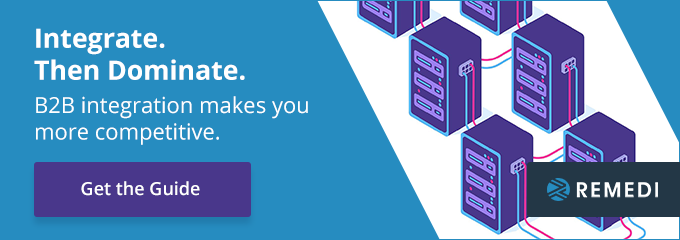
When APIs became commercially viable and made their way into enterprise technology, many people believed they would replace EDI systems. As it turns out, that’s not true – EDI and APIs are better together.
In this article, we’ll explore why APIs won’t replace EDI systems any time soon and how the partnership of EDI and APIs benefits your organization.
Don’t Think of EDI vs. APIs…
EDI systems are a legacy technology – companies have been using them for years to process large batches of data. Because they’re legacy technology, and because they have some shortcomings, it’s not difficult to see why people might think APIs could replace them.
However, APIs simply won’t replace EDI systems any time soon (or maybe even at all). For a start, EDI systems are workhorses; companies haven’t replaced them because they’re good at what they do, and there’s no substitute for them. Second, companies have to reach a certain level of digital maturity to use APIs, and not everyone is there yet. Third (and most importantly), EDI and APIs can work together to bring your company excellent business results.

…Think of EDI and APIs
EDI and APIs aren’t mutually exclusive technologies – if you use one, you can definitely use the other, and you can use them together. They complement one another. There are two main reasons:
- APIs overcome the deficiencies of other architectures
- APIs enable real-time information transfer
Over the years, software engineers have created many architectures to enable information sharing so data doesn’t sit in silos. However, these architectures have their weaknesses: they don’t handle external interactions, meaning that they couldn’t send information to an application outside of the company. That’s where APIs come in.
APIs aren’t perfect either, though. They don’t integrate – you need the backbone of an enterprise service bus, and you can’t manage APIs through a service-oriented architecture.
EDI and APIs Complement One Another
Another reason why it makes sense to use EDI and APIs is that APIs enable real-time information transfer. That’s something EDI systems can’t do-- and no longer a nice to have.
The combination of EDI and APIs allow you to run queries and get information immediately; for example, you could query an order status and receive an answer in moments.
At the same time, nothing (not yet anyway) beats the accuracy, cost efficiency, and security of the EDI documents that make up the backbone of supply chains across the county and the globe-- invoices, purchase orders, advance shipping notices, and several hundred other transaction sets businesses in all industries use every hour of every day.
When it comes to EDI and APIs, it’s not a zero-sum game. These two technologies are actually stronger together, and when they’re combined, organizations reap the benefits of greater speed and instant information transfer. Integrate. Then Dominate.



